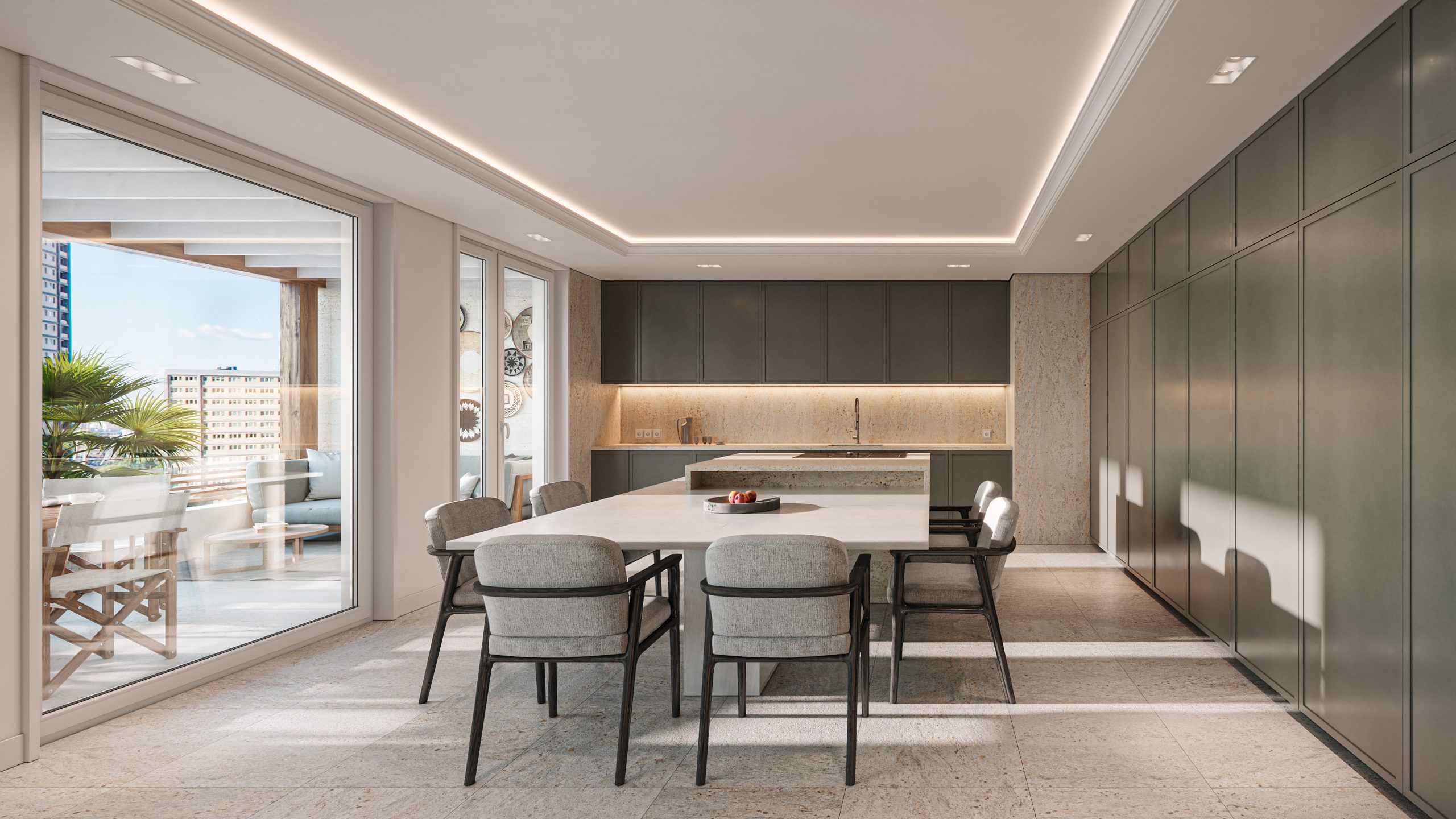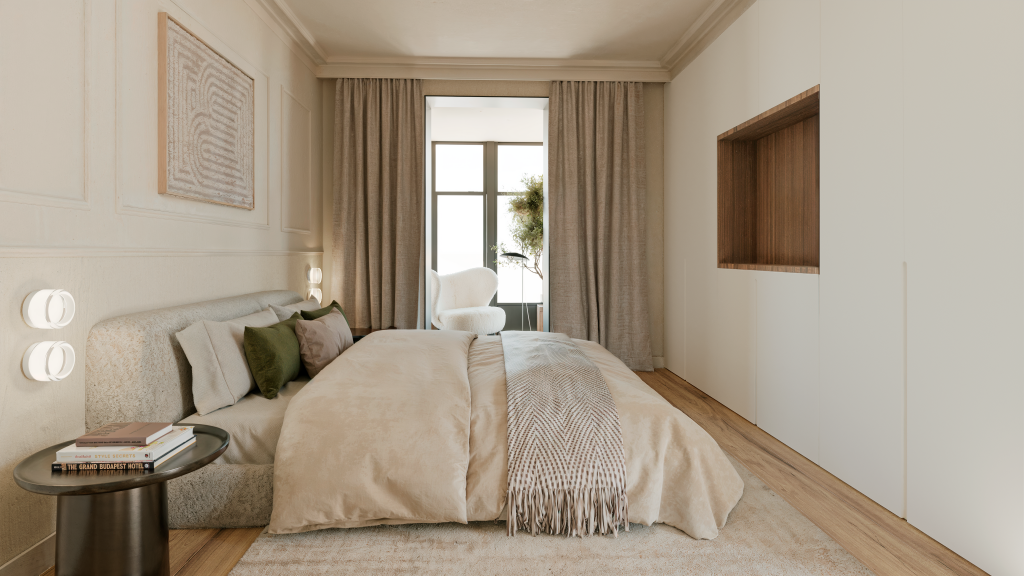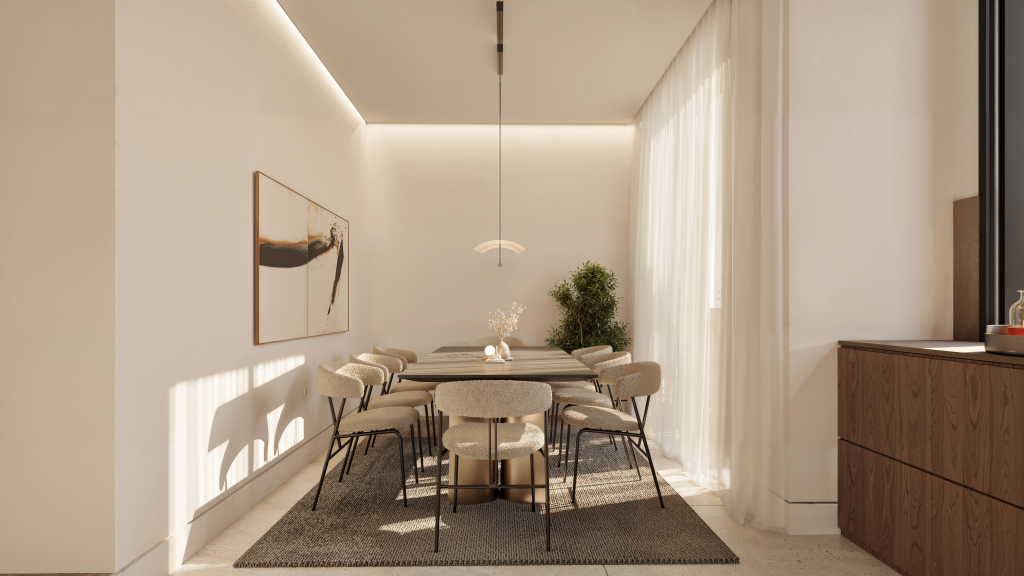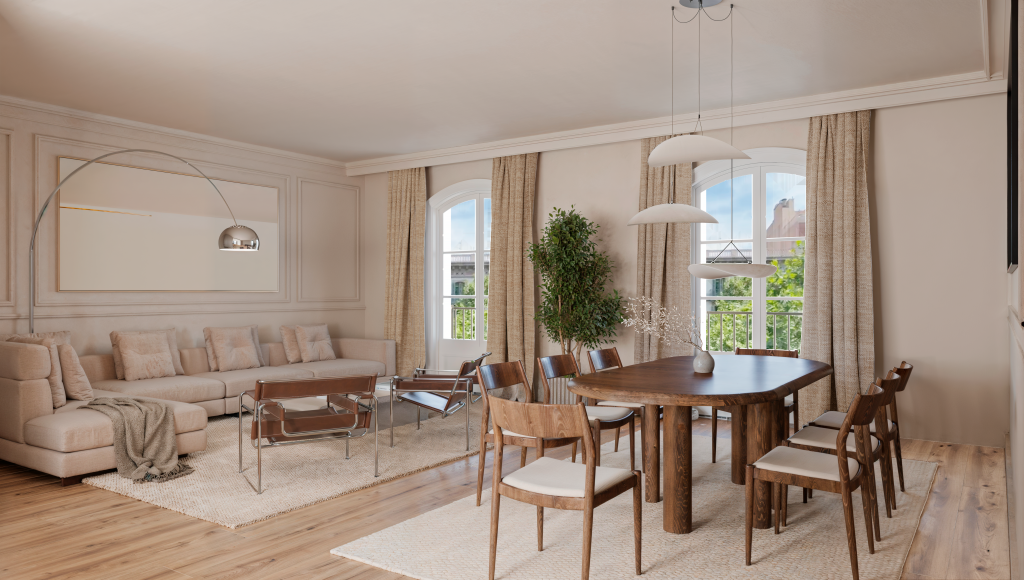In today’s market, projects are judged first by how they’re shown. When clients and investors decide in seconds whether to engage, visual quality becomes a competitive lever. Hyper-real 4K rendering turns a technical proposal into a clear, persuasive story that signals innovation and competence.
Static render vs. hyper-real 4K
A generic static image can show size and basic layout, but it rarely conveys identity or mood. A hyper-real 4K visual captures natural light, material depth, and fine architectural details—including tailored interior design elements—so spaces read as lived, believable environments. For serious teams, 4K means quality-first, not generic imagery—and that shift delivers conversion, clarity, and credibility.
How high-value 4K renders are built
- Strategy first. Define audience, message, and atmosphere before opening the software.
- Advanced 3D model. Clean geometry and correct proportions create a reliable base for iteration.
- Materials that feel real. Marble, timber, glass, and concrete are calibrated to read with tactile credibility.
- Lighting that tells the story. Balanced daylight and artificial lighting make the scene feel alive.
- Strategic viewpoints. Axonometric and aerial angles clarify massing and circulation at a glance.
- Precise post-production. Color, micro-detail, and contextual integration deliver a compelling final image.
What each stakeholder gains
- Architects: Stronger competitions and client approvals thanks to readable design intent and premium presentation.
- Clients: Faster decisions—the photorealistic view reduces ambiguity and aligns expectations.
- Investors: Clear value signaling and better pre-sales performance, supporting ROI and market positioning.
FAQs
Why invest in 4K instead of standard resolution?
4K elevates detail and realism, so 3D renders communicate material quality and light accurately. Compared with basic 2D visualization, high-resolution 3D visualization reduces uncertainty, strengthens presentations, and shortens decision cycles.
Does hyper-real imagery really impact sales and leasing?
Yes. Photorealistic CGI helps buyers and tenants picture themselves in the space. Firms using premium 3D visuals and Architectural visualization report higher engagement and smoother pre-sales, because the proposition is easier to grasp at first glance.
Is 4K dramatically more expensive?
Not typically. While production time can be higher, the uplift in perceived value and conversion often offsets cost. When handled by an experienced 3D rendering company or CGI company, the process is efficient and repeatable across phases and typologies.
What’s the difference between Architectural CGI and generic CGI?
Architectural CGI is purpose-built for buildings and interiors: scale accuracy, construction logic, and code-aware details. Generic CGI may look attractive but can misrepresent feasibility. For professional outcomes, choose a specialist 3D visualisation service.
When do I use 2D vs 3D Visualisations?
Use 2D visualization for diagrams, plans, and quick massing checks. Use 3D Visualisations and 3D rendering to test materials, light, and atmosphere—and to present to non-technical audiences who need a photorealistic view to decide.
How should I choose a provider?
Look for consistent material fidelity, balanced lighting, and flexible workflows around your 3D model. Ask about pipeline, review cadence, and licensing. A mature 3D rendering services team can scale from concept to marketing packs without losing quality.
Can a provider handle interiors as well as exteriors?
Yes—if they demonstrate strong interior design case studies and controllable lighting. The best partners deliver coordinated exterior and interior sets as part of integrated 3D rendering services.
